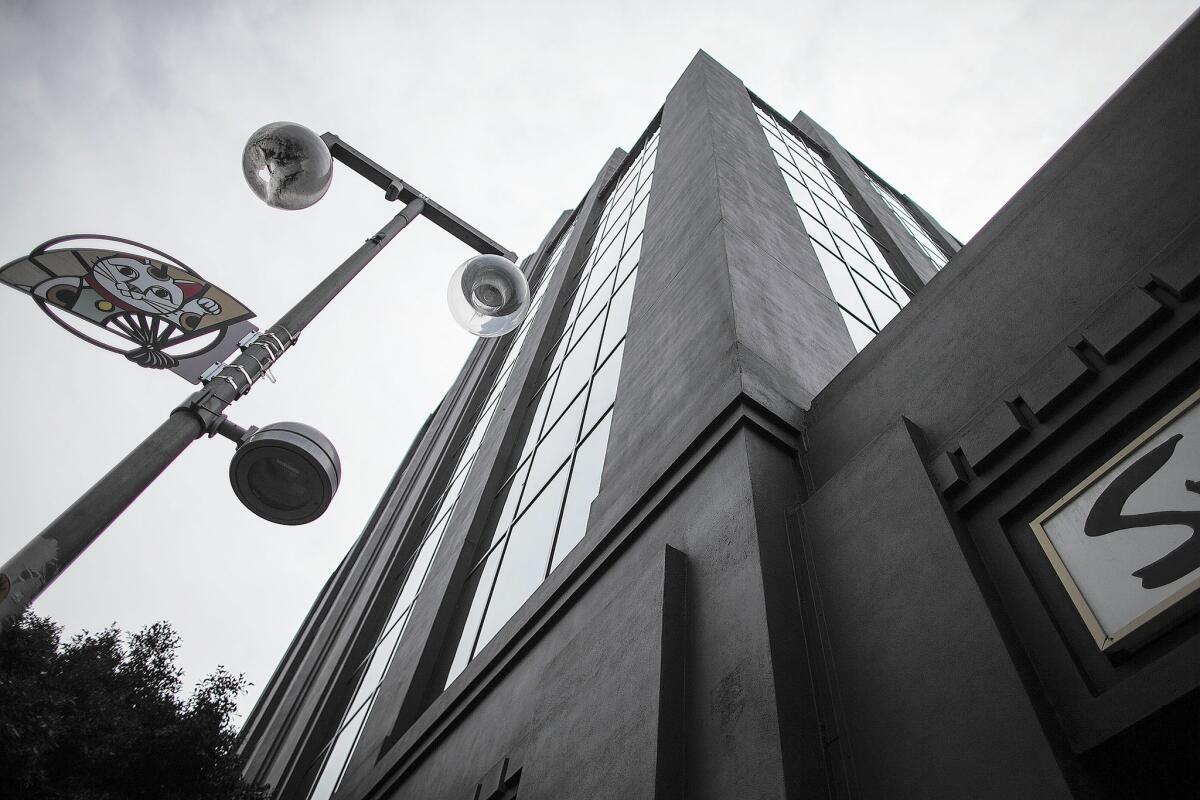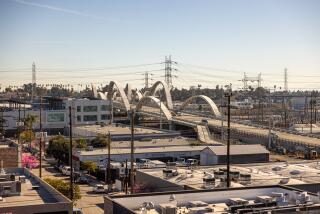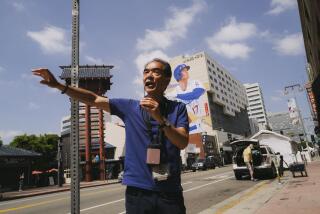Developer buys Brunswig Square office and retail complex in Little Tokyo

A former drug company manufacturing and office complex in Little Tokyo has been purchased by a prominent Atlanta developer that plans to renovate the property and rent space to businesses in creative fields.
Brunswig Square is in the heart of the popular shopping and residential district, where hundreds of apartments have recently been built or are under construction. It also is not far from many old warehouse and industrial buildings in the Arts District being converted to so-called creative offices, which typically appeal to technology, entertainment and digital-media firms.
“It’s right between downtown and the Arts District, in a nice way,” said Michael Phillips, president of Jamestown, the new owner of Brunswig Square.
The 360-374 E. 2nd St. building houses 110,000 square feet of office space atop 30,000 square feet of shops and restaurants. The building is barely one-third occupied, he said, and in need of improvements.
The company intends to preserve the historic character of the building, which has high ceilings and floor-to-ceiling windows, but add “more outdoor space for dining and engagement” at the corner of 2nd and Central Avenue. The property was last renovated in 1986.
Jamestown’s holdings in the Los Angeles region include the four-building Lantana office complex in Santa Monica and Malibu Village shopping center in Malibu. It also owns One Times Square and Chelsea Market in New York.
The sellers of Brunswig Square were real estate investment firms GreenOak Real Estate Advisors and Arenda Capital Management. Terms of the sale were confidential, but people familiar with the downtown real estate market estimated the price in the mid-$60-million range. Phillips declined to disclose how much Jamestown plans to spend on the renovations.
The eight-story building was constructed in the early 1930s by Brunswig Drug Co., a manufacturer of pharmaceuticals and cosmetics, in the former industrial district on the east side of downtown. The company’s successor firm carries on today as Bergin Brunswig Corp. in Orange.
Brunswig Square was designed by celebrated Los Angeles architect Albert C. Martin, who made a substantial imprint on the L.A. skyline. Among his other well-known buildings are the Million Dollar Theater on Broadway and the former May. Co. department store building on Wilshire Boulevard. He was also a co-designer of City Hall.
The Little Tokyo building was key to the architectural firm’s survival in the Great Depression, said Martin’s grandson Christopher C. Martin, chief executive of the family firm now known as AC Martin.
Business at the firm was “absolutely cooking” until the stock market crashed in 1929, Martin said. “After that, not only did they not get any new work, the work they had on the boards stopped and the bills weren’t paid. My grandfather was absolutely destitute.”
Brunswig Square was one of only five or six jobs the firm had until 1936, Martin said. Photos in the firm’s archives show that the opening of Brunswig Square was celebrated with crowds and Klieg lights.
In the early 1930s, Brunswig Square and other industrial buildings in the Japanese American community were served by a railroad spur, said Bill Watanabe of the Little Tokyo Historical Society.
“If one were observing the area around the Brunswig Building, there would have been an interesting mixture of Japanese-speaking first-generation immigrants, younger Japanese American youths or kids running in the streets and sidewalks, alongside the shops, businesses and warehouse buildings,” Watanabe said.
Twitter: @rogervincent
ALSO
This investment fund has a social agenda — and high-profile backers
When an HOA board plays favorites
More to Read
Sign up for Essential California
The most important California stories and recommendations in your inbox every morning.
You may occasionally receive promotional content from the Los Angeles Times.







